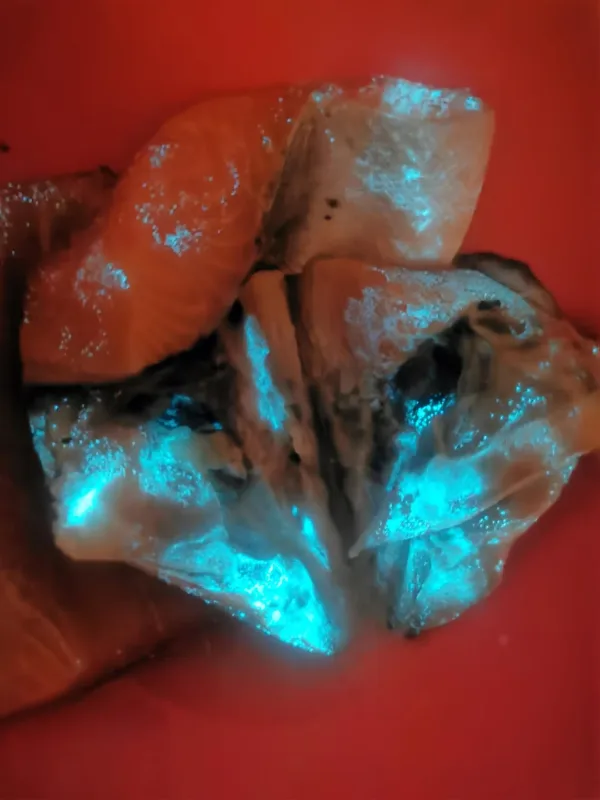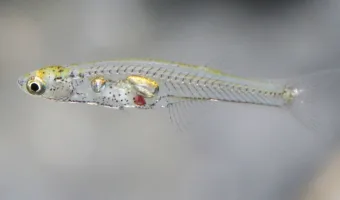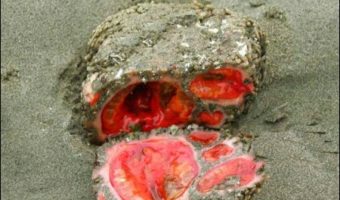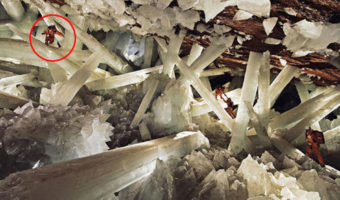Man Finds His Salmon Glowing in the Dark and Sparks Public Health Debate
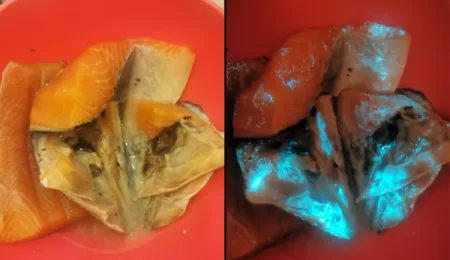
A man shared pictures of his salmon pieces, which he had seasoned with salt and lemon juice, on Reddit. He wasn’t online to share a recipe. The man was freaking out, as one would rightfully be, when he found his salmon glowed like some radioactive element when his daughter accidentally switched off the light.
The shared picture showed the glowing seafood with a bluish-green sheen, a food fit for extraterrestrial beings.
The food was visually alarming and a matter of concern for public health, more so because the glow is visible only in the dark. People might be eating contaminated seafood without even noticing.
Table of Contents
In 2020, a case of fluorescent seafood was reported in Thailand, where a 21-year-old man ate his glowing sushi.
While glowing seafood is not an everyday culinary experience, it’s also not extremely rare. Frantic callers have made many reports, stretching across multiple decades, explaining to health departments and poison control centers in the US about mysteriously glowing seafood. The complaints usually involved imitation crab meat, shrimp, and fish.
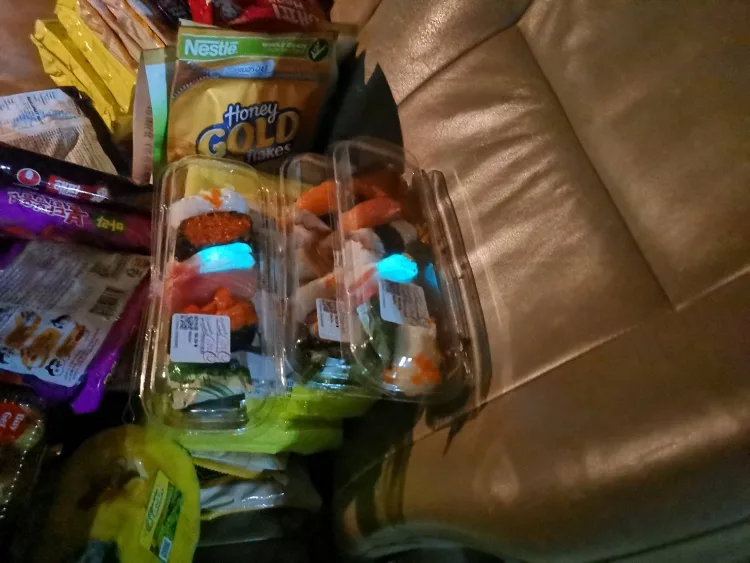
Glowing seafood incidents are not limited to the US. In July 2020, Arun Arun Yolpaiboon and her son Natthanai Kanchanawasa bought three sushi boxes for dinner in Nonthaburi, Thailand. However, they were aghast to see their shrimp sushi emitting an eerie blue-green glow in a low-lit area of their home.
While the mother lost her appetite, Natthanai decided to eat the sushi after giving it a good boil. To the family’s relief, Natthanai didn’t suffer any illness.
Luminescent bacteria was the primary culprit in all samples of glowing seafood tested by the US Food and Drug Administration (FDA).
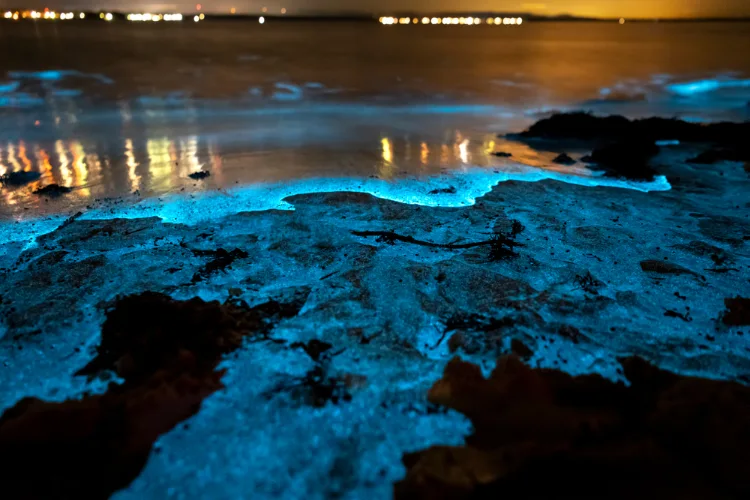
Several people who had been in contact with glowing seafood were concerned that the food had absorbed radiation and, as a result, became fluorescent.
There were also concerns about the seafood being covered with bioluminescent algae, the kind that lights up crashing waves on shores and is toxic to humans.
However, contaminated seafood exposed to radiation requires ultraviolet radiation to glow. Also, there’s no evidence to suggest that toxic algae could be the culprit. Bioluminescent algae glow only when the waves are disturbed, so their ability to light up seafood on the dinner table is contestable.
Additionally, the FDA did not find bioluminescent algae in any contaminated samples collected and tested between 1989 and 1998.
Surprisingly, all samples were contaminated with luminescent bacteria.
Luminescent bacteria are found in seawater, living on the surface, in the guts, and light organs of fish and squid. They glow due to a chemical reaction catalyzed by the protein luciferase. During the reaction, chemical energy is converted into light energy, enabling the bacteria to emit blue-green light.
Luminescent bacteria are not pathogenic to humans and are generally considered safe to consume.
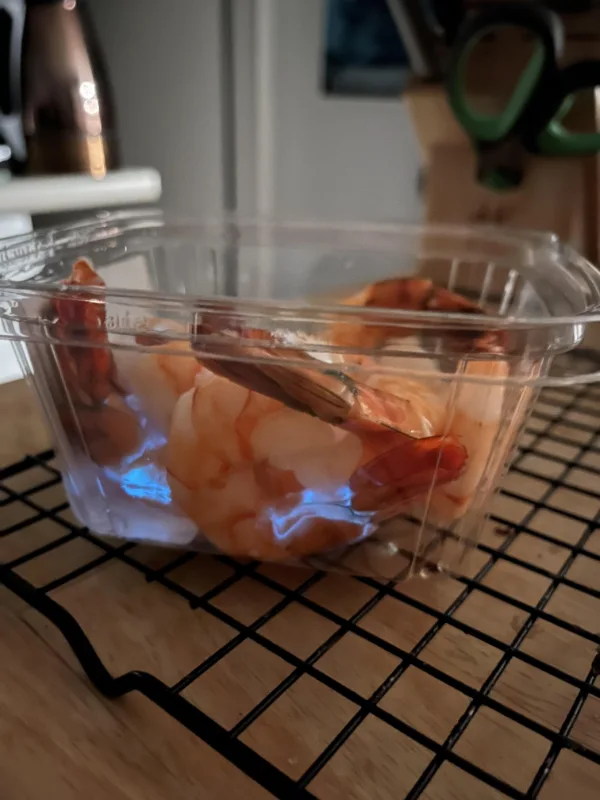
In 1889, P. Tollhausen conducted the first test regarding the safety of luminescent bacteria for human consumption. The curious man took a rather rudimentary approach to his test.
He fed his cat the suspiciously glowing organism. Since the cat didn’t show any signs of illness, he ate it, too. The man survived and concluded the organisms were safe for humans.
The FDA also published its findings from the tested samples in 1998. Out of the nine marine bioluminescent bacteria species, P. phosphoreum was the most common contaminant found in samples.
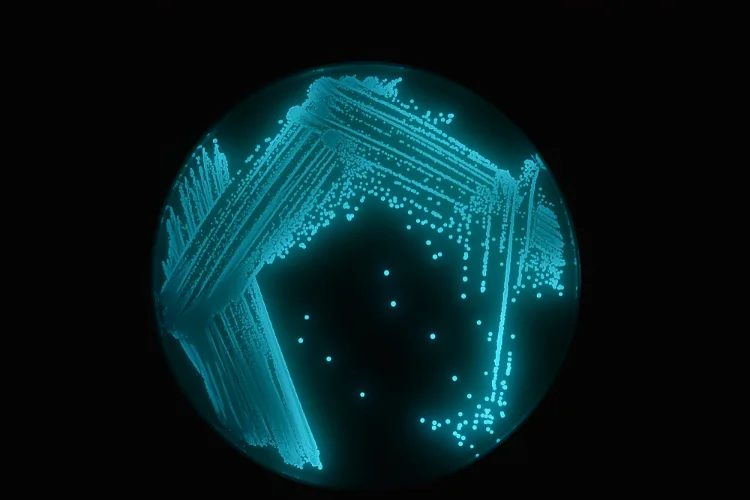
Marine species of luminescent bacteria are not considered pathogenic to humans, except V. vulnificus (VVLI). Irrespectively, the cooking process kills the pathogens and the luminescent bacteria, if any.
However, the report revealed few people who had consumed the glowing seafood fell ill with diarrhea and stomach cramps.
When FDA personnel visited places where the reported seafood was brought or served, they observed that these places lacked basic food hygiene practices. There was a high chance of the cooked seafood being contaminated with the uncooked food, contaminating the cooked portion with live bacteria and pathogens.
According to the FDA report, cooked glowing seafood is generally considered safe for consumption as heat kills the luminescent bacteria and pathogens. However, care should be taken not to contaminate it with raw portions.














